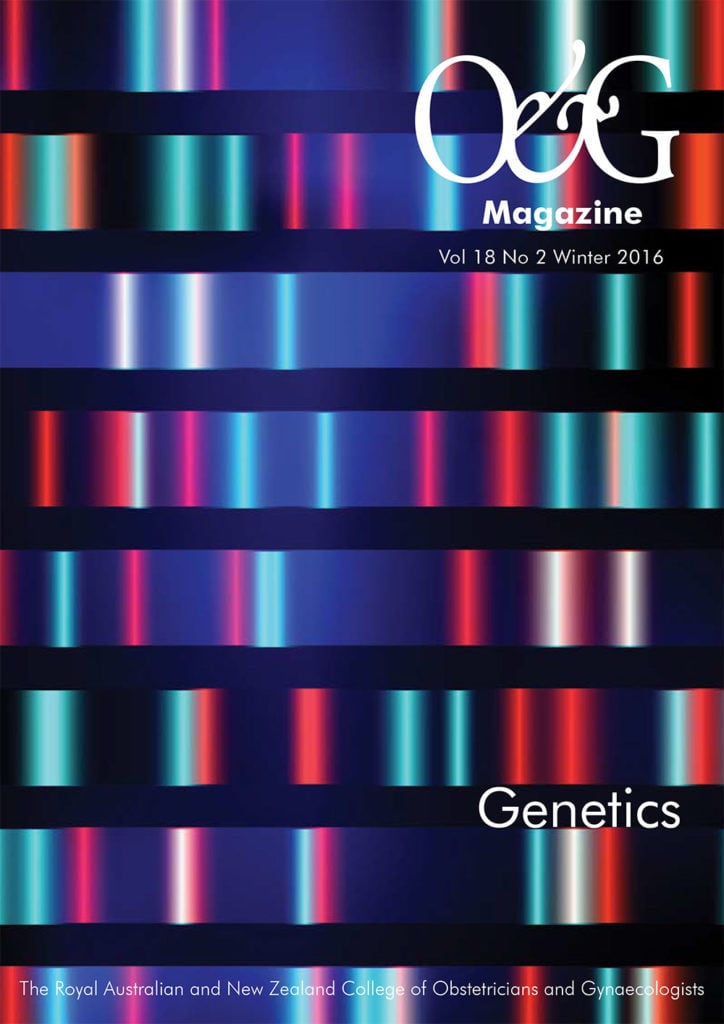In their book, Sex at Dawn, the authors Ryan and Jethá examine a number of assumptions about parenting and paternity.1 They write that a cornerstone of the standard narrative of human reproductive behaviour is that it can be viewed from a perspective of economics and game theory. By maximising the number of your offspring who survive and themselves reproduce, your chances of a genetic legacy are greatest, says the theory. This is no guarantee of happiness though, as Robert Wright points out in his book, The Moral Animal. He writes: “We are built to be effective animals, not happy ones” the frequent absence of happiness is what keeps us pursuing it, and thus makes us productive.2
Taking an evolutionary approach to reproductive behaviour leads to important considerations of paternity and concerns about it, at least for men. The issue of paternity is at the core of much of men’s behaviour – and for good evolutionary reasons. ‘In our…past, men who invested in children which were not their own would, on average, have left fewer descendants than those who reared only their own genetic offspring. As a consequence men were, and continue to be, preoccupied with paternity.’3
Prof Robert Brooks, an evolutionary biologist at the University of New South Wales, has this to say:
Questions of paternity are built over the deepest well of human insecurity, for children searching to know who they are,for fathers wanting to know whose kids they are raising and for mothers uncertain about the strength of the bonds holding their families together. […] If you have read, heard or watched anything on this question, you will have encountered many estimates, from 9% to more than 30%. The idea that almost one in three people might be the result of what we biologists rather matter-of-factly call ‘extra-pair copulations’ titillates and horrifies in equal measure.4

Sexual economics
A figure of 30 per cent of offspring resulting from ‘extra-pair copulation’ seems extraordinary. Ryan and Jethá point out that, from a man’s perspective, the genetic worst-case scenario is to spend time and resources raising another man’s child (or children) and thus propel somebody else’s genes into the future at the expense of one’s own.5 However, they question the accepted assumption that male sexual jealousy has the evolutionary underpinning it is assumed to have – paternity certainty. For example, if the fundamental basis of this behaviour (both for men and for women) is a concern that an individual’s genes are propagated, then:
A man should be far less concerned about his wife having sex with his brothers – who share half his genes – than with unrelated males. Gentlemen, would you be far less upset to find your wife in bed with your brother than with a total stranger? Ladies, would you prefer your husband have an affair with your sister? Didn’t think so.6
When the argument is put in these terms, it does indeed seem a little shaky. There is clear evidence though that interest in paternity is strong in the community (at least in the male members of the community) and online paternity testing services, using newly available DNA sequencing technologies, have ramped up this demand.
For most of human history, paternity testing was based on assessment of physical features and eye colour, which was clearly in the eye of the beholder. By the 1920s, advances in the understanding of physiology allowed for more objective tests of paternity using methods such as ABO blood group typing. By the 1930s, pattern analysis of other proteins and enzymes was established and in 19707 human leukocyte antigen (HLA) status was used. With the development of Sanger sequencing and now massive parallel sequencing, DNA testing has become the only formal and exact method for paternity testing.8 Such testing requires an easily obtained cheek-swab saliva sample.
Rapid genetic profiling of the child and putative father can be undertaken with 99.999 per cent probability of a match, making for very accurate results. The most common techniques compare DNA from father and offspring using polymerase chain reaction, short tandem repeat and restriction fragment length polymorphism methodologies. Results for a DNA paternity match can be available within a few days from most paternity testing laboratories. Cheek-swab saliva testing can be done as soon as immediately after birth and can either exclude or confirm the identity of the biological father with great accuracy.
Garbage in, garbage out
So what about the estimate that 30 per cent of paternity assumptions (or claims) are wrong? According to Brooks9:
The problem with most data on paternity is the near impossibility of obtaining an unbiased sample. A paternity clinic, for example, is a bad place from which to estimate the rate of misattributed paternity. Many clients are there because at least one party isn’t convinced. Likewise, any study recruiting families – however randomly – might have more success recruiting mothers who harbour no doubts about their children’s paternity.
Prof Brooks details how Swinburne University scientist Dr Michael Gilding researched the origins of the popular belief that as many as 30 per cent of paternities are misattributed and was able to trace the source of the high estimate. It appears that British obstetrician Dr Elliot Philipp mentioned this at a meeting in 1972, as an estimate from a small sample of parents. The findings were never formally published and it remains unclear as to how paternity was established and from what population the estimate was made.
Home delivery
Marketing of home DNA paternity tests that play on insecurity has proven to be a business bonanza, but firms draw a very clear distinction between home tests and legally acceptable chain-of-custody paternity tests, where correct identification of the samples is critical. Forensic tests are typically collected by an independent doctor or nurse, who must take legal responsibility for sample handling and can act as a witness to the sample collection. A typical explanation of this critical difference from an Australian website runs like this:
A legal paternity test is used when court admissible results are required, typically in cases of child custody, child support or paternity disputes. Home tests are informative DNA tests of which results are used for peace of mind or just for reassurance. They have no legal validity.10
The advent of cell-free DNA isolation and massive parallel sequencing has opened new business opportunities for paternity entrepreneurs. Here is a typical example of web content from a prenatal paternity testing service that advertises online:
Prenatal DNA paternity testing can be performed after the 14th week of gestation. Our company will provide you with a special sample collection kit which will contain everything needed to collect the blood sample. We provide within it blood collection tubes for the mother and swabs for the alleged father, the instructions as well as forms to be filled out. Included in the kit is also a prepaid FedEx courier pouch to send your samples back to our laboratory. Also, we will arrange your blood collection at a local laboratory or hospital. Full confidentiality of our testing: the mother can submit different samples from the alleged father(s) without asking him. Our laboratory accepts hair samples, toothbrushes, semen stain and other forensic samples collected from the alleged father.11
Law, but not as we know it
As part of a two-year investigation into handling of sensitive genetic information, the Australian Law Reform Commission12 raised a number of concerns about direct-to-public paternity testing. The report notes that information revealed by paternity testing is particularly sensitive; going beyond ‘familial information’ into the ‘very nature and identity of the family itself’. To make things worse, the context in which the information is revealed is often highly emotionally charged. Where paternity has been misattributed, perhaps for many years, there may be issues of betrayal, revenge and the search for resolution.
Furthermore, the Commission emphasised that DNA paternity testing differs from many other kinds of genetic testing in a fundamental way. Whereas for many medical purposes, useful information can be obtained by testing the genetic material of a single person – who may be shown to have (or not to have) a particular genetic mutation with potential clinical consequences – paternity testing is relationship testing and requires the participation of two or more individuals in order to reveal useful information about their biological relationship.
In most cases, one of the individuals whose genetic sample is required for testing will be a child. In such instances, the Commission pondered who should make the decision on behalf of the child about whether they should submit a genetic sample for testing. The authors noted that the question is particularly difficult when those who have parental responsibility for the child (who in other circumstances would make important decisions affecting the child’s welfare) are directly affected by the outcome of the testing procedure. Issues of special concern were identified in the Commission’s report:
- the possibility of error and fraud where the genetic sample is collected without independent supervision
- the possibility of sample contamination because the sample may not have been stored correctly or shipped to the laboratory under optimal conditions, or because the chain of custody of the sample cannot be verified; and
- the possibility that appropriate informed consent may not have been obtained from the person.
How much does all of this actually matter? Prof Brooks says:
Many men make magnificent fathers to children that do not bear their DNA. But…insecurity over paternity has tectonically shaped much that is least admirable about male behaviour and [has] twisted societies […] Interweaving strands of evolutionary research suggests that paternity confidence forms part of the glue bonding men to their children and to the women who bore them. Undermine that confidence and men invest less readily in the subsistence and safety of their families, and become more likely to abscond.
So what of that statistic that up to 30 per cent of paternity is incorrectly assigned? The DNA era has allowed us to look at this afresh and, using the very technology that has caused so much of the insecurity, it seems more likely that the true rate is somewhere between one and three per cent across a broad range of societies.13
Perhaps this should provide some comfort, but as Prof Brooks reminds us:
Even a one per cent rate of misattributed paternity still adds up to millions of individual children, worldwide, each part of an interesting, sometimes tenuous and often heart-breaking story.
References
- Ryan C, Jethá C. Sex at Dawn. New York, Harper Collins. 2010.
- .Wright R. The Moral Animal: the new science of evolutionary psychology. New York, Pantheon Books. 1994.
- Birkhead T. Promiscuity: an evolutionary history of sperm competition and sexual conflict. New York, Faber and Faber. 2000.
- Brooks R. What are the chances that your dad isn’t your father? The Conversation, April 16, 2014. Accessible at: http://theconversation.com/what-
are-the-chances-that-your-dad-isnt-your-father-24802 - Ryan C, Jethá C. Sex at Dawn. New York, Harper Collins. 2010.
- Ryan C, Jethá C. Sex at Dawn. New York, Harper Collins. 2010.
- .Wright R. The Moral Animal: the new science of evolutionary psychology. New York, Pantheon Books. 1994.
- Ma H, Zhu H, Guan F, Cherng S. Paternity testing. J Amer Sci. 2006; 2(4):76-93.
- Brooks R. What are the chances that your dad isn’t your father? The Conversation, April 16, 2014. Accessible at: http://theconversation.com/what-are-the-chances-that-your-dad-isnt-your-father-24802
- www.easydna.com.au/home-vs-court-admissible-legal-testing.
- www.prenatalgeneticscenter.com/services/prenatal-dna-paternity-test.
- Australian Law Reform Commission. Essentially yours: The protection of human genetic information in Australia (ALRC Report 96). Commonwealth of Australia, 2002. Accessible at: www.alrc.gov.au/publications/report-96.
- Brooks R. What are the chances that your dad isn’t your father? The Conversation, April 16, 2014. Accessible at: http://theconversation.com/what-are-the-chances-that-your-dad-isnt-your-father-24802






Leave a Reply